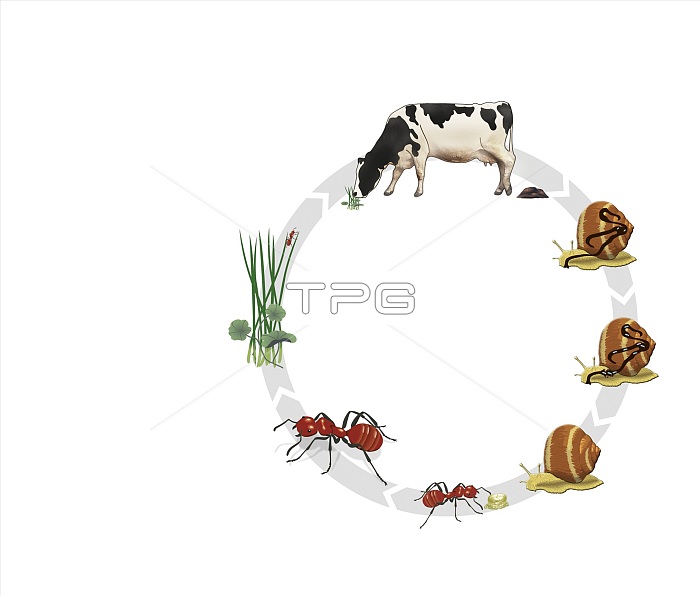
Flukeworm life-cycle. Computer illustration showing the life-cycle of a typical fluke (class Trematode) worm. The young of this parasitic flatworm infects a mollusc, such as a snail (right), before passing to an insect carrier (ant, lower left) that feeds on the mollusc. This insect is then eaten by a larger animal (the definitive host), passing the fluke to that animal, where it reproduces and lays its eggs. Here, a cow accidentally ingests the ant whilst grazing (top) on grass (left). The fluke eggs are then passed out in the animal faeces (top left) and the cycle repeats itself.
| px | px | dpi | = | cm | x | cm | = | MB |
Details
Creative#:
TOP15339932
Source:
達志影像
Authorization Type:
RM
Release Information:
須由TPG 完整授權
Model Release:
N/A
Property Release:
N/A
Right to Privacy:
No
Same folder images:

 Loading
Loading